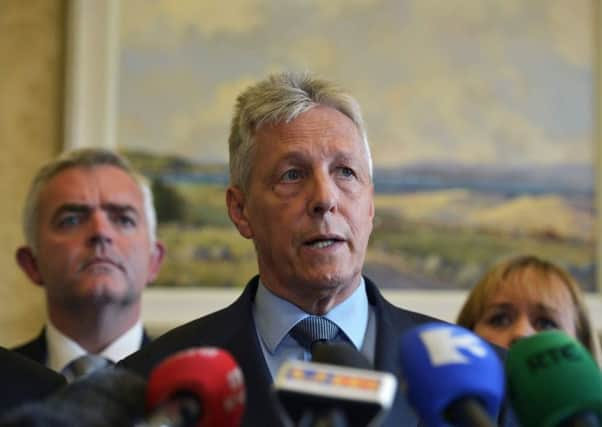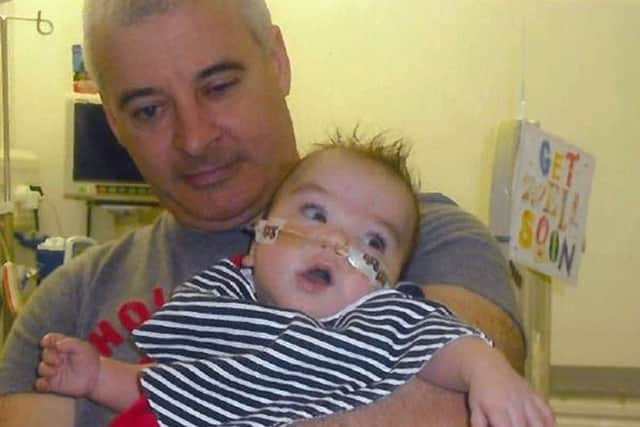John Mullin: A flawed peace is still peace


‘Fourteen vodkas: seven with Coke, five with Irn-Bru and three with American cream soda.” So roared my drinking colleague, as he pushed his way through the roaring throngs at the Elephant Bar in east Glasgow and somehow lodged his party’s order over the songs of Protestant supermacy. It was a decent enough intro for a story back then, and it has stayed with me for almost 25 years.
Although this was yards from Parkhead, and we were bound for that most quintessential Glaswegian cultural events, an Old Firm encounter, this was really my introduction to Belfast. I was a young reporter sent to Northern Ireland as holiday cover, and, in the downtime between door-knocks, I had devised a diverting wheeze: to travel with Celtic fans on the ferry to the match, and to return with Rangers supporters, and to write what we in the journalism trade call a colour piece.
Advertisement
Hide AdAdvertisement
Hide AdThis one was green and white, and red, white and blue, and, I suppose, orange. It was one of those days when it was glory to be alive. The fearsome, high-speed cat and mouse car chases on the A77 back to the ferries; the dubious banter with such an edge that trouble might flare at any moment, and, of course, the drink. There were gallons poured down throats, and then gallons more.


It was human; it was visceral; and it was very, very funny. I fell in love with Northern Ireland that day, and it is an all-consuming affair that has lasted ever since.
I was there as back-up man to the Guardian’s resident correspondent. As well as holiday cover, I was sent whenever something sufficiently major happened to require double-handing: the Shankill bombing, the Greysteel massacre, the slaughter at Loughinisland, infamous slayings each requiring careful referencing just to ensure the correct spelling. And later I was lucky enough to be the paper’s representative there, for three years through the Good Friday Agreement and beyond.
Had I started this piece with the news that Northern Ireland’s power-sharing executive was in danger of collapsing; that the power-sharing executive in the “province” was on life-support, and that First Minister Peter Robinson had quit, chances are you’d have glanced at it, and moved on. Northern Ireland? Didn’t they sort that out years ago? Trouble, you say? Don’t they always find a way somehow to stumble on?
Even years ago, a news story had to vault some barrier of the unusual before the news desks back in London were much interested. And – to be fair – how is mere death exotic enough when you have 496 of them to choose from in 1972, the worst year of what we euphemistically call The Troubles?
News editors were only reflecting the views of most back in Britain. But, even now, the low-level violence in some areas – the pipebomb attacks or the punishment beatings – though reduced, would garner pages of outrage were they ever visited on the Home Counties.
That last day in August 1991, when I travelled for my Celtic-Rangers frippery, ten people had been murdered in ten separate run-of-the-mill shootings in the preceding two weeks. I had covered them all. No-one was much interested: 102 people died that year.
Perhaps, then, it is progress of sorts that just one murder this year has garnered the headlines, even if most media organisations were initially slow to see the consequences for the big picture.
Advertisement
Hide AdAdvertisement
Hide AdWhen I heard last month – it featured way down the list of priorities on UK radio and not at all at first on television news – that Kevin McGuigan had been shot dead in the Short Strand area, a republican enclave in the middle of Protestants east Belfast, it was clear that the power-sharing executive would be in some difficulty. In years gone by, the killers of the Catholic would have been loyalists. Not this time.
McGuigan was suspected of an earlier murder four months before, which attracted even less attention.The victim was Gerard Davison, and he was shot nearby, in the Markets area, a republican estate close to Belfast’s city centre, as he took his grand-daughter to school.
The two men had been friends, close allies in the IRA. You may dimly recall it was meant to have packed up around 2005, as it was dragged – with some reluctance – towards decommissioning its arsenal as part of the Good Friday Agreement, then seven years old. There was a last flurry of activity, including the small matter of a £26m bank robbery apparently to give the lads a handsome win bonus before formal shutdown.
Together, in the mid-nineties, Davison and McGuigan founded Direct Action Against Drugs, effectively a front organisation for the IRA which allowed it to keep killing during political negotiations but to deny involvement. It was a sham the government was, for the most part, only too happy to indulge as it juggled to keep the political show on the road.
Small time drugs dealers, like Mickey “Moneybags” Mooney, Brendan “Speedy” Fegan, Paul “Bull” Downey and Brendan “Bap” Campbell – everyone has a nickname in Northern Ireland – were executed. I spent many a night in the rain at the murder scenes.
Within republican estates, these were portrayed as killings to protect communities from the scourge of drugs, and everyone knew DAAD was a flag of convenience. The truth? This was a republican protection racket – at least some of the victims were killed for failing to pay the IRA the going fee for a licence to operate.
Davison and McGuigan had fallen out – some point to the murder of Robert McCartney, beaten to death by IRA members after stepping in to stop a young hoodlum getting a hiding in a city centre bar. It was one of those rare stories to break through ten years ago, and Davison was believed to have ordered the killing.
While Davison stayed true to the mainstream republican movement, McGuigan had become a dissident. Davison had even ordered his former chum be knee-capped.
Advertisement
Hide AdAdvertisement
Hide AdAfter Davison’s death, McGuigan’s time was limited. The Police Service of Northern Ireland said former IRA members were behind his murder, but – predictably – provided some wriggle room with the suggestion that there may have been no official sanction by the leadership – the leadership, remember, that isn’t meant to be there anymore.
This is a game long played in Northern Ireland, and it allows Peter Robinson, leader of the DUP, and who used to be the most vehement critic of such kidology, to stop short of collapsing the power-sharing executive. That affords some time for a political rescue.
And this, perhaps, is the greatest sign of all of how far Northern Ireland has come: that a party which once denounced the Good Friday Agreement and its rivals in the Ulster Unionist Party for turning a blind eye, is doing so itself to keep that historic accord on the road.
The IRA may not quite have gone away, you know, but Northern Ireland’s progress won’t be derailed by this episode.
An imperfect peace, for sure, but miles better than 1998, the last peak year when the Good Friday Agreement was signed, and when 57 died. Sometimes, dodgy compromise is the only medicine.